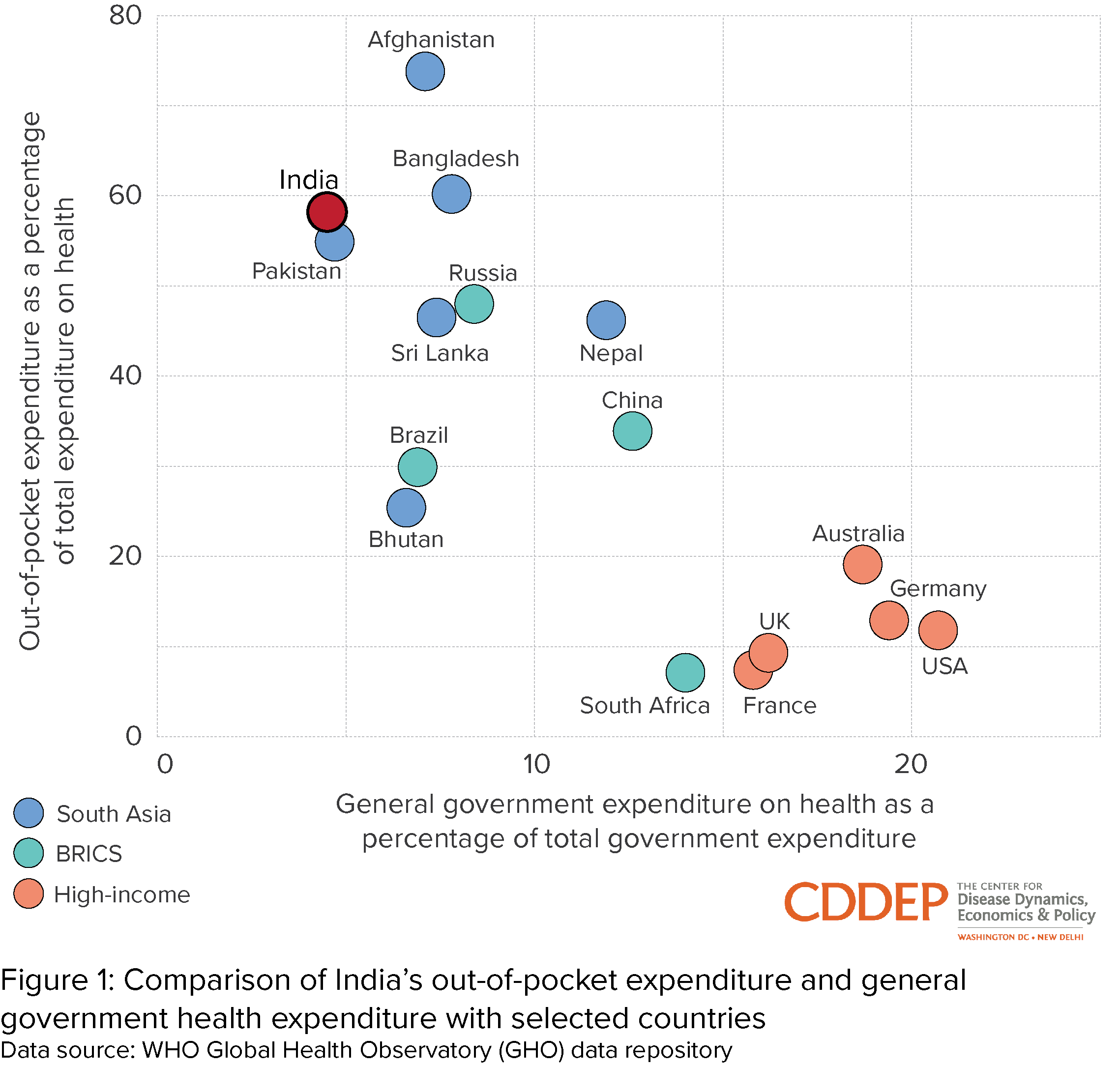June 04, 2016

A weekly roundup of news on drug resistance and other topics in global health.
Moving the battle against AMR forward: The fiscal and educational challenges. CDDEP Resident Scholar Abigail Colson spoke on “The global antimicrobial prescribing landscape” at a British Society for Antimicrobial Chemotherapy roundtable. Colson presented CDDEP findings from The State of the World’s Antibiotics, 2015 and other sources to describe the current global prescribing situation. Video and slides from the lecture are available online. [British Society for Antimicrobial Chemotherapy]
An estimated 63 million Indians are pushed below the poverty line by health expenses each year—and out-of-pocket drug expenditures are the chief cause, writes CDDEP Senior Research Analyst Jordan Levinson in a post on the CDDEP blog. India’s low investment in public health is a major driver of high out-of-pocket spending. Levinson notes that if the Government of India follows through on its aspirations to rationalize drug use, it could both relieve the financial burden on citizens and help moderate the growth of antibiotic resistance by limiting unnecessary use of antibiotics. [CDDEP]
The second baby with Zika-linked microcephaly in the United States was born in New Jersey this week. The mother, who was diagnosed with Zika in her home country of Honduras, traveled to New Jersey for treatment and to be near family. The first U.S. case was a baby born to a Brazilian woman in Hawaii in January. Researchers in France published new evidence of sexual transmission of Zika in the New England Journal of Medicine this week, reporting for the first time possible transmission through oral sex. They noted that further evidence is needed to confirm their findings, but cautioned that recommendations related to transmission may need to be reviewed. [CIDRAP, NEJM]
Catheter-associated urinary tract infection (CAUTI) rates were reduced by 22 percent over four years in acute care facilities with a package of informational and behavioral interventions. The program was introduced In 600 hospitals across the United States, and followed infection rates between 2009 and 2013. Catheter use also declined in non-ICU settings, from 20.1 percent to 18.8 percent of patient-days. Changes in both CAUTI incidence and catheter use were concentrated in non-ICU areas. Little change was seen in ICUs. [NEJM]
“To fight superbugs, fight poverty.” Writing in a PLOS Public Health Perspectives blogpost, Jason Silverstein argues that socioeconomic conditions can be strong drivers of increased antibiotic resistance. Out-of-pocket payment for healthcare and for essential medicines in low- and middle-income countries push those with the least resources to buy antibiotics in unregulated markets. Investment in basic sanitation and providing access to affordable healthcare and antibiotics are better for people and for fighting antibiotic resistance. [PLOS Public Health Perspectives Blog, Lancet Infectious Diseases]
The U.S. national public health emergency fund has only $57,000 to deal with new pandemics. The fund began with $30 million in 1983, with the expectation that Congress would “refill” it as needed. Instead, it has only been re-funded twice—the last time in 1993. A New York Times editorial observed that keeping the fund solvent would make resources available for pandemics that need quick action without shortchanging other priorities, such as Ebola, for every new pandemic: “Robbing existing programs is sure to hurt public health the longer it goes on.” [NPR, The New York Times]
“[P]otentially harmful bacteria are emerging and evolving in locations where we don’t look for them.” Writing in National Geographic, reporter Maryn McKenna cites multi-drug resistant bacteria in chicken coops in El Salvador and urban wastewater treatment plants in Lima, Peru, locations far outside of current surveillance systems. Increasingly, genes conferring antibiotic resistance are being found in a variety of farm and soil environments across the world, from large industrial farms to rural smallholders. [National Geographic, Nature]
Pizza Hut joins the list of fast food chains pledging to limit antibiotics in its food items. The restaurant chain, owned by Yum! Brands, announced that antibiotics important to human medicine will no longer be used in chicken toppings on pizza (but not other chicken menu items) by March 2017. Yum! Brand’s Taco Bell announced a similar measure in April 2016, but the company’s largest chicken-serving chain, KFC, has yet to declare significant changes in antibiotic use. [CNN Money, NRDC]
Want to share interesting news via the digest? Email [email protected]
Image via Wikimedia Commons.











